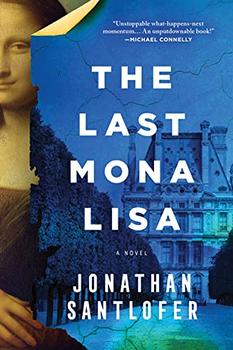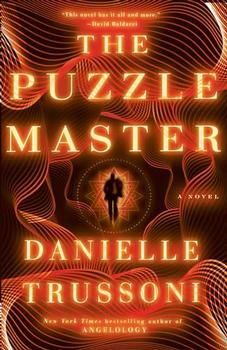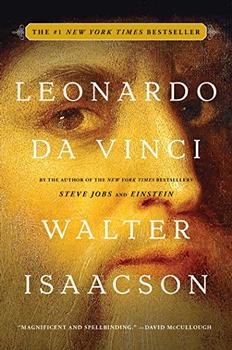Summary | Excerpt | Reviews | Beyond the book | Read-Alikes | Genres & Themes | Author Bio

In 1911, the Mona Lisa disappeared from its home at the Louvre in Paris. It took two years for the painting to be retrieved and for Vincent Peruggia to be identified as the man behind the theft. But the truth of the heist is still shrouded in speculation, with some believing that the recovered painting is not Leonardo da Vinci's original work. Author Jonathan Santlofer's novel The Last Mona Lisa fills in the holes of this real-life mystery through the fictional character of Luke Perrone. Luke, art professor and great-grandson of the infamous thief, is searching for the truth of his ancestor's actions. The discovery of Vincent's journal promises to answer questions about his motivations as well as the authenticity of the Mona Lisa hanging in the Louvre. However, Luke isn't the only one who knows about the journal and the answers it may hold, and he quickly finds himself tangled in a web of theft, forgery and murder. The Last Mona Lisa is a high-stakes novel for art lovers and armchair sleuths alike.
The story alternates between Luke's current-day search for answers and excerpts from Vincent's journal, written in the early 1900s. Santlofer creates a sympathetic character in Vincent, building on the few details that are known about the real man. He gives the would-be artist basic but realistic motivations that have the reader hoping for a happy ending despite knowing that the character's actions will land him in jail. Luke is similarly relatable; he's seeking the truth and trying to find his place in the world. Both men are motivated by family, and it's interesting to see not only how far they are willing to go to reach their goals but how they react to the consequences of their actions.
In addition to jumping between the past and the present, the narrative jumps between several points of view, including those of some characters whose true identities aren't revealed until the final twist. They each have a unique connection to the world of art, and Santlofer includes quite a bit of history and tourism to help flesh out their backgrounds. Luke's sightseeing of a variety of (real) famous paintings, sculptures and architectural works provides an educational element that immerses readers in Renaissance art. The detailed descriptions of these pieces also reveal something about the author: Santlofer himself is an artist, and more specifically, a world-renowned replicator of famous works of art.
Although descriptions of the art are interesting, they do, unfortunately, slow down the narrative. In general, the plot is slow to start, but as Luke's research begins to uncover more truths—and as those following him grow more impatient—the pace and suspense begin to build. Chapters become shorter as the book continues, which keeps the story moving, and the last 100 or so pages proceed at a breakneck pace. Santlofer teases the reader with just enough information to keep their interest without truly giving away anything until the very end. There are several twists that are just unexpected enough to be satisfying while also allowing for a neat conclusion to the Mona Lisa mystery.
Although Santlofer embellishes the facts to fill in the gaps in the real story, the result is a seemingly realistic account of the crime and its fallout, both historical and modern. The narrative does start slowly, but readers who persist will be rewarded with interesting characters, vivid descriptions of famous artwork, and a conclusion that will satisfy fans of both mystery and art.
![]() This review
first ran in the October 6, 2021
issue of BookBrowse Recommends.
This review
first ran in the October 6, 2021
issue of BookBrowse Recommends.

If you liked The Last Mona Lisa, try these:

by Danielle Trussoni
Published 2024
Reality and the supernatural collide when an expert puzzle maker is thrust into an ancient mystery—one with explosive consequences for the fate of humanity—in this suspenseful thriller from the New York Times bestselling author of Angelology

by Walter Isaacson
Published 2018
He was history's most creative genius. What secrets can he teach us? The author of the acclaimed bestsellers Steve Jobs, Einstein, and Benjamin Franklin brings Leonardo da Vinci to life in this exciting new biography.
Your guide toexceptional books
BookBrowse seeks out and recommends the best in contemporary fiction and nonfiction—books that not only engage and entertain but also deepen our understanding of ourselves and the world around us.